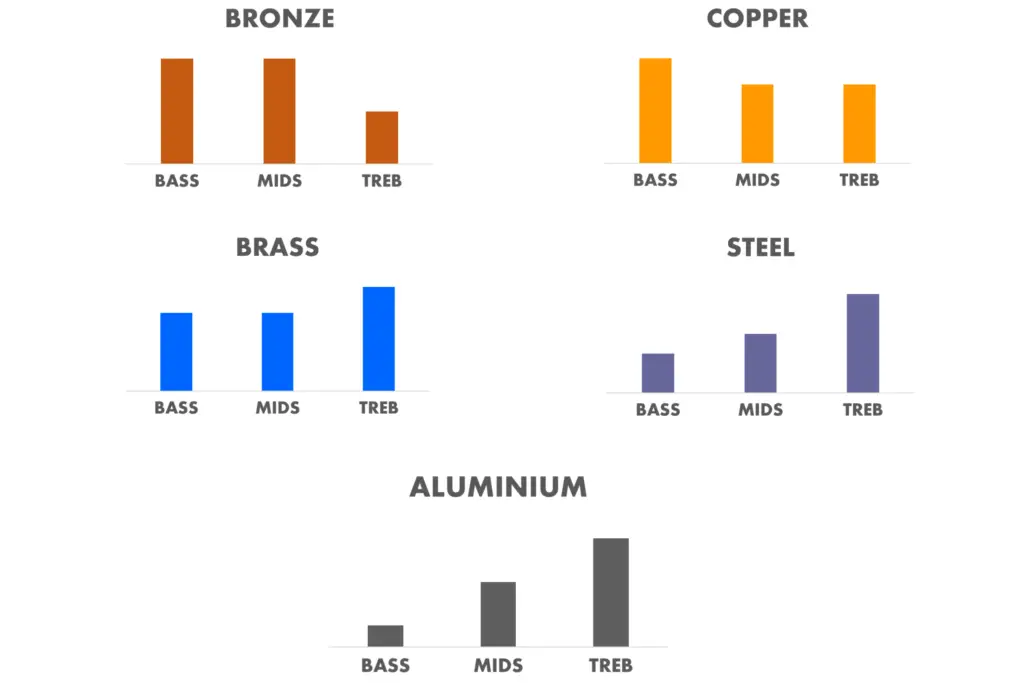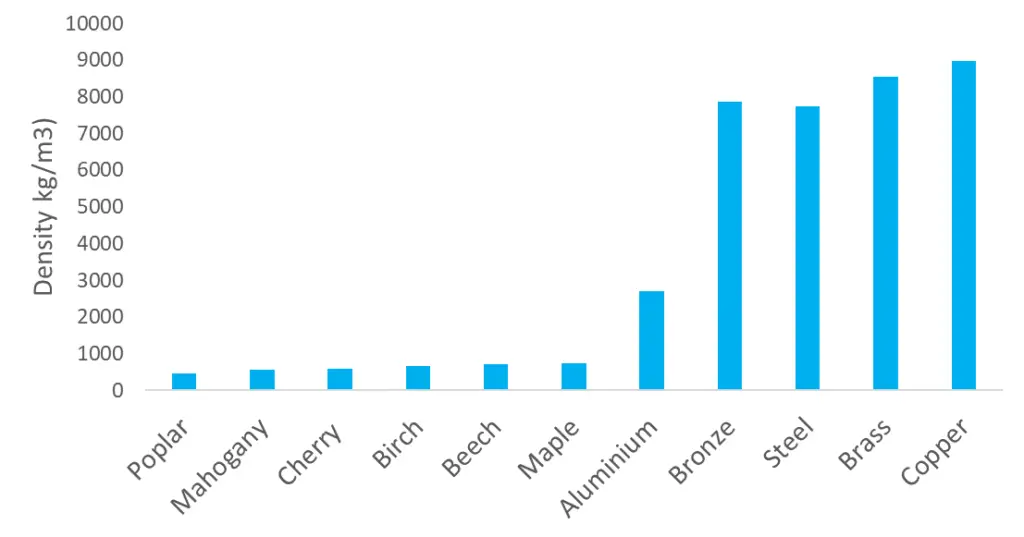Snares typically have either wooden shells or metal shells and this has a big impact on how the drum sounds. In this article I’ll be comparing wooden and metal snares head-to-head so you can understand the differences and decide which you prefer.
Wood vs Metal Snares 101
Wood snares sound warmer and more resonant compared to metal snares which sound brighter, sharper and more direct. Snare drums with wood shells are versatile and often preferred for recording whereas metal snares are typically favoured for rock, metal and live performances.

Wood Snare Overview
On the whole, wood snares are known for their warm and full sound with plenty of resonance and sustain.
There are several types of wood used to make the shell of a snare drum. Each of these species sound different from one another so it’s important not to consider all wood snares as equals.
Some have more bass emphasis (low end frequencies) giving them a warmer tone. Some have more treble emphasis (high end frequencies) giving them a crisper and brighter sound. Woods with more mid-range typically sound fuller.
Here’s a quick summary of each of the different wood species and how they sound in order of warmest to brightest:
- Mahogany: strong mid-range response with a good amount of low-end
- Poplar: balanced response with slight mid-range emphasis
- Beech: balanced response with slight emphasis on mids and low-end
- Birch: strong high-end response with scooped mids
- Cherry: strong mid-range and high-end response with less low-end
- Maple: balanced response

Metal Snare Overview
Metal snares are typically described as having a bright and sharp sound with plenty of attack making them sound more direct.
Here’s a quick summary of each of the different metals and how they sound in order from warmest to brightest:
- Bronze: strong low-end and mid-range response
- Copper: fairly balanced but with slightly more focus on the low-end
- Brass: fairly balanced but dark sounding with slight focus on the high-end
- Steel: slight emphasis on the high-end
- Aluminium: heavy emphasis on the high-end

Direct Comparisons
Now that we’ve been through the basics with each shell material, let’s compare them in the following categories:
- Sound Difference
- Weight
- Price
- Appearance
Sound Difference
Metal snare drums typically sound brighter and sharper compared to wood snare drums. Metal snares sound more punchy and have more ring compared to wood snares which sound warmer and fuller by comparison.
Metal snares are slightly louder than wooden snares however the difference is very small nowadays, particularly compared to several decades ago.
Wooden snare drums are often preferred by drummers looking for a warmer and more rounded tone and are particularly common in jazz, country and softer rock however they can be used for all styles of music. The sound of wooden snares is also often preferred for recordings.
Metal snares on the other hand cut through the mix much more and sound direct. They are often preferred in live performances and for heavier styles of much such as hard rock and metal where more bite is needed.
Key Differences:
- Metal snares sound brighter and wood snares sound warmer
- Wood snares have more sustain whilst metal snares have more attack
- Metal snares have more ring compared to wood snares
Keep in mind that there are variations between the sounds of different types of wood and metal as discussed previously.
Check out this YouTube video to hear a direct comparison between the sound of a metal and wooden snare drum.
Weight
The weight of a snare drum is affected by the diameter, depth, shell thickness and shell material primarily.
Metal is significantly more dense compared to wood with some types being 10x more dense. Hence, metal snares are heavier compared to wood snares.
The difference isn’t quite as dramatic though because metal snares usually have thinner shells to prevent them from being too heavy.
Here is a graph showing the average density of different types of wood and metal used to make snare drum shells.

Price
There is not much of a price difference between metal and wood snare drums and usually other factors will have more a bearing on the cost. It is possible to find relatively expensive and inexpensive versions of both materials too.
For example, steel and aluminium snares are typically cheaper than bronze and copper snares. Also, birch and beech snares are usually less expensive compared to maple and mahogany snares.
- Metal snare drums: range between $200 and $800 on average
- Wood snare drums: range between £200 and $600 on average
Appearance
Which shell material looks the best is all personal preference. Some drummers prefer the classic look of a wooden snare and others like a more modern metal snare’s design.
In both cases you can get different colors and graphics so it’s more about finding a particular snare which you like the look of rather than restricting yourself to a particular material.
Images link to Amazon
Here are some more articles you might find useful:


